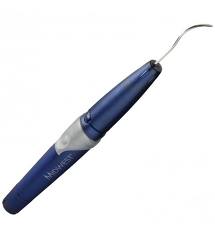Picasso Lite

Caries ID

The Caries ID handpiece contains three separate fibers: a receiving fiber, a green indicator fiber, and a red indicator fiber. The first fiber collects light from the tooth, comparing the reflection against a healthy, baseline reflection. caries idThe second fiber emits a green light, indicating healthy tissue. If the Caries ID detects any demineralization or decay, the red light illuminates and alerts the doctor of the change in tooth structure. Not surprisingly, this technology quickly and precisely identifies even the tiniest bit of decay. This means shallower, simpler fillings, preserving more tooth structure, and providing a specific means of monitoring suspicious areas. No x-rays are required with Caries ID, so patients do not have to worry about radiation exposure.
Planmeca 3D Cone Beam Xray Unit
We have a state of the art x-ray unit that we use to image the teeth, bone, sinuses and supporting structures. The Cone Beam CT is great for checking thejaws to see if there is sufficient bone for implant placement; looking at roots of the teeth for fractures and abscesses. This 3D x-ray can also be used to look for cyst and tumors of the jaws.

Get in Touch
To schedule an appointment:
(937) 848-7741 or Text 71430
4291 Sugarcreek Dr
Bellbrook, OH 45305
Business Hours
Monday – Thursday
8am – 4:30pm
Friday – Sunday
Closed
